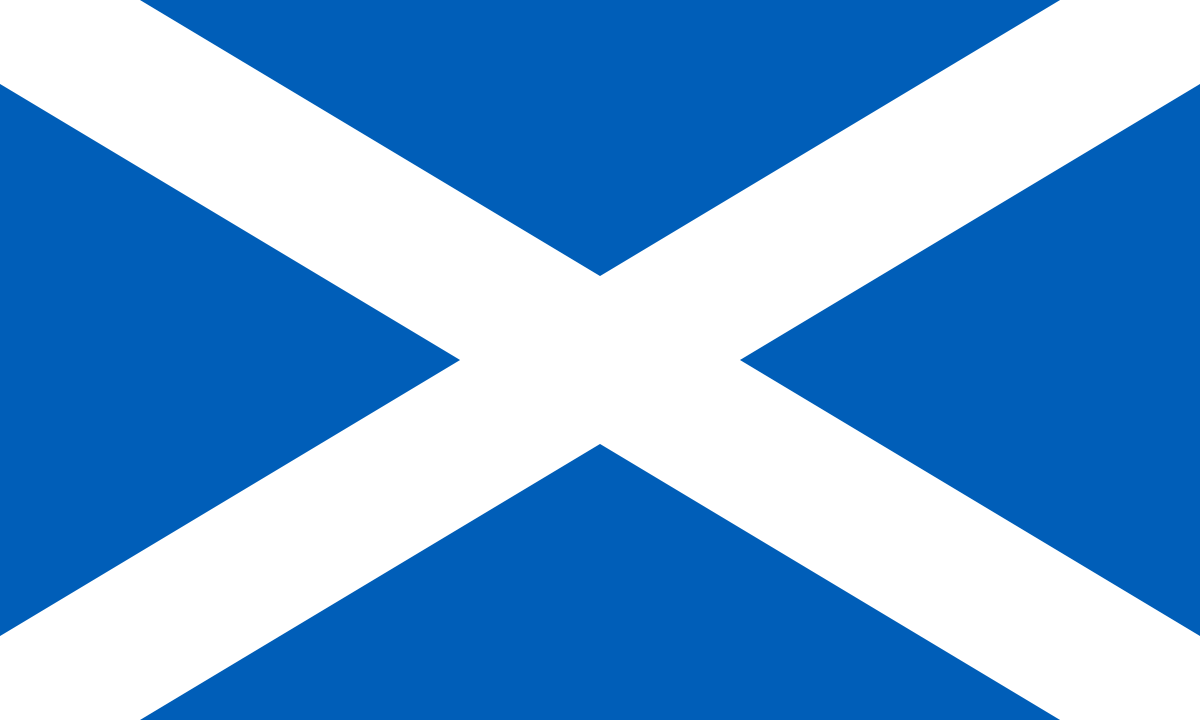The Legend of the Scottish Flag

The Scottish flag is a recognised symbol of Scottish patriotism and spirit, known as the St Andrews Cross or the Saltire. The flag is one of the oldest used in Europe and has multiple legends and origin stories behind the simple symbol. If you're curious about the legend behind the Saltire, continue reading!
The Origins
Many theories surround the Scottish flag's origins, but what is certain is the flag has been in use for over 500 years. The origins of its design are theorised to go back to biblical times in 60 AD.
The main story links to Saint Andrew's crucifixion. The tale depicts St. Andrew persisting not to be crucified in the same way as Jesus Christ with the vertical cross out of respect, resulting in his crucifixion standing horizontally. Some also believe St Andrew commonly wore blue robes, which represent the blue in the flag.
Over 700 years later, the story continues in East Lothian. King Angus and his Scottish Army fought the English and were vastly outnumbered. The story tells King Angus looked to the sky and saw the formation of the Saltire from clouds and believed it was a sign from St Andrew. The army won the battle, astonishment to the nation. King Angus declared Saint Andrew the patron Saint of Scotland, resulting in the Scottish flag representing the blue skies and white cloud's formation of the Saltire.

The Design
This has resulted in the same design for the official Scottish flag for over 500 years. The flag's proportions are often the ratio of 3:5, with the white bars with 1/5th width of the flag.
Interestingly, the background of the flag has no set shade of blue and often varies. Sky blue, pale blue and navy blue are often depicted, depending on the fabric and dyes. When used within the Union Jack, however, consistently the same navy is used. In 2003, a committee was held by the Scottish parliament to agree on one set standard colour. The colour was decided to be set as Pantone 300, which was controversially not the same shade as blue used within the union jack. This agreement on one set colour made it easier for manufacturers and retailers to keep consistency for the flag.

The Lion Rampant Alternative Scottish Flag
While the blue and white Saltire is the official Scottish national flag, the Lion Rampant is a common alternative.
The Lion Rampant is a bright and bold design, with a yellow background, red border and featuring a red lion. The design was created for King Richard, with the Scottish Coat of Arms featuring within the flag has heavy symbolism.
Also known as the Royal Banner of Scotland, the Royals of Scotland traditionally used this flag at the time. As there hasn't been a Scottish Monarchy since the 17th Century, it was passed in official use to the Queen of England, who uses it in Royal visits and symbolism within Scotland.
Interestingly, it is officially illegal for anyone not a royal to present this flag, which is why it's less commonly recognised. However, this law was passed in parliament in the 1600s. Therefore this law is not enforced, and the flag is often sold and presented within Scotland.

Final Thoughts
The origin legend of St. Andrew's crucifixion and the follow-up symbolism of his journey to becoming Scotland's Patron Saint is a significant one and makes the Saltire flag even more patriotic. Next time you spot the famous Saltire, you'll be able to appreciate the history behind it, and if you see the Lion Rampant, be sure to let the owners know they're technically breaking the law!

 Check out our Yotpo Reviews
Check out our Yotpo Reviews